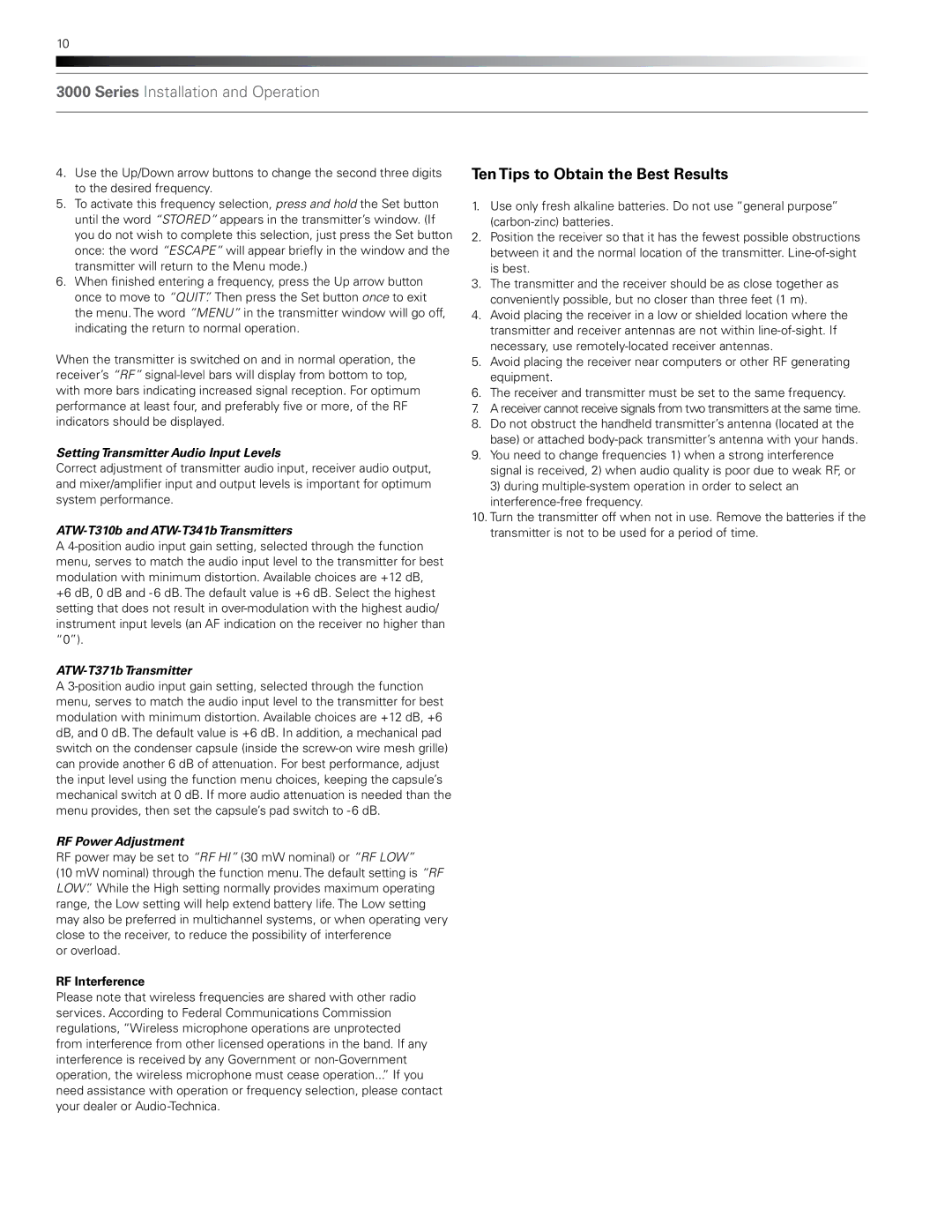10
3000 Series Installation and Operation
4.Use the Up/Down arrow buttons to change the second three digits to the desired frequency.
5.To activate this frequency selection, press and hold the Set button until the word “STORED” appears in the transmitter’s window. (If you do not wish to complete this selection, just press the Set button
once: the word “ESCAPE” will appear briefly in the window and the transmitter will return to the Menu mode.)
6.When finished entering a frequency, press the Up arrow button once to move to “QUIT”. Then press the Set button once to exit the menu. The word “MENU” in the transmitter window will go off, indicating the return to normal operation.
When the transmitter is switched on and in normal operation, the receiver’s “RF”
Setting Transmitter Audio Input Levels
Correct adjustment of transmitter audio input, receiver audio output, and mixer/amplifier input and output levels is important for optimum system performance.
ATW-T310b and ATW-T341b Transmitters
A
+6 dB, 0 dB and - 6 dB. The default value is +6 dB. Select the highest setting that does not result in
ATW-T371b Transmitter
A
RF Power Adjustment
RF power may be set to “RF HI” (30 mW nominal) or “RF LOW”
(10 mW nominal) through the function menu. The default setting is “RF LOW”. While the High setting normally provides maximum operating range, the Low setting will help extend battery life. The Low setting may also be preferred in multichannel systems, or when operating very close to the receiver, to reduce the possibility of interference
or overload.
RF Interference
Please note that wireless frequencies are shared with other radio services. According to Federal Communications Commission regulations, “Wireless microphone operations are unprotected from interference from other licensed operations in the band. If any interference is received by any Government or
Ten Tips to Obtain the Best Results
1.Use only fresh alkaline batteries. Do not use “general purpose”
2.Position the receiver so that it has the fewest possible obstructions between it and the normal location of the transmitter.
3.The transmitter and the receiver should be as close together as conveniently possible, but no closer than three feet (1 m).
4.Avoid placing the receiver in a low or shielded location where the transmitter and receiver antennas are not within
5.Avoid placing the receiver near computers or other RF generating equipment.
6.The receiver and transmitter must be set to the same frequency.
7.A receiver cannot receive signals from two transmitters at the same time.
8.Do not obstruct the handheld transmitter’s antenna (located at the base) or attached
9.You need to change frequencies 1) when a strong interference signal is received, 2) when audio quality is poor due to weak RF, or 3) during
10.Turn the transmitter off when not in use. Remove the batteries if the transmitter is not to be used for a period of time.
